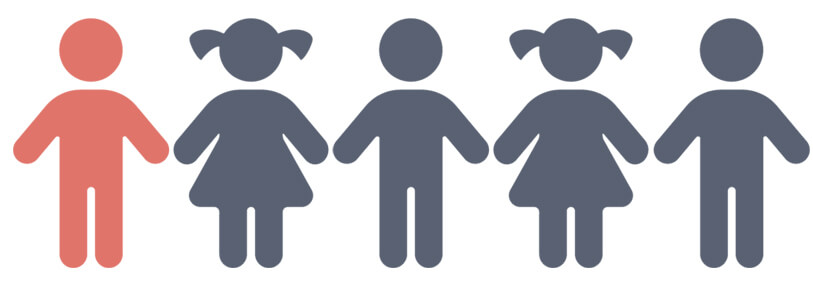Solutions & Challenges for Children’s Mental Health in the COVID-19 Pandemic
Child abuse needs to stop and education is the key.
The following free resources are essential to driving change and
are made possible through your contributions. Thank you.

Children’s Mental Health During the Covid-19 Pandemic
The pandemic created the perfect storm of stressors for children and their families. Experts are calling for renewed attention to how this past year may impact children’s short-and-long-term mental health and well-being. The trends in children’s mental health were sobering leading up to the pandemic, with 1 in 5 children experiencing a mental illness and rates of major depression rising dramatically. Now, there is a growing concern that the pandemic has led to increased mental health challenges and suicide risk among children.
The following statistics highlight the challenges — including barriers in accessing culturally appropriate care and mental health resources — and the opportunities to improve the mental health system and support children’s mental health going forward.
Mental illness has been rising since before the pandemic

Before the pandemic, up to 1 in 5 children had a diagnosed
mental health disorder
Common mental illnesses among young people are anxiety & depression
%
of all mental illnesses develop by age 24
%
Increase in depression for children
aged 12-17 between 2004 & 2019
Adolescent girls are over 2x as likely to have had an episode of major depression
Barriers and access challenges to mental health care
Black, Latino and Indigenous children are disadvantaged in mental health services in the areas of:
Prevention
Quality Treatment
Access
Outcome of Care
Hispanic children are almost 3x more likely than white children to experience delays in emergency room care for mental health visits

54% of LGBTQ youth who reported wanting mental health care in the prior year did not receive it
Impact of the pandemic on children’s mental health
The pandemic has created a perfect storm of stressors for children and youth and experts warn that it may negatively impact mental health
Stressors
- Uncertainty
- Social isolation
-
School closures
-
Familial challenges & economic instability
-
Losing a family member to COVID-19
Barriers to Care
- Lack of internet or technology limiting telehealth access
- Fewer mental health screenings due to school closures & delayed pediatric care

Suicide is the 2nd
leading cause of death for youth
Strategies to prevent suicide:
- School education programs
- Crisis centers – call & text
- Improve media portrayals
- Restrict access to lethal means
- Positive adult/child relationships
National data are unavailable on child & youth suicide during the pandemic
but there are concerns about an increase
A metropolitan-level study found that recent suicidal ideation was:
1.60x higher in March & 1.45x higher in July 2020
Local Evidence:
compared to those months in 2019
Strategies to support mental health during and after the pandemic
Targeted and intentional interventions and strategies can help support at-risk children and give them the resources to live healthy and productive lives

Coordinate Services
Coordinate mental health with other services that support children & families, including education & the legal system
Proper Funding
Create flexible & equitable funding streams for promotion, prevention, early intervention & screening and treatment services

Workforce Capacity
Establish a national, cross-disciplinary initiative to increase workforce capacity in children’s mental health
Structural Racism
Address discrimination & structural racism that impacts access to care & mental health outcomes

Social Determinants
Increase children’s well-being by reducing family poverty & addressing social determinants of health

Health Technology
Invest in innovative technology to increase access to mental health supports, including telehealth
National Suicide Prevention Lifeline: 1-800-273-8255
References & Sources
The abuse may be brief, but the trauma lasts a lifetime.
Kids’ lives and futures are on the line!
Be the voice against neglect and contribute to end child maltreatment today.
Our Lessons are available for Offline learning!
Previous Section
Parenting Resource Center
Solutions & Challenges for Children’s Mental Health in the COVID-19 Pandemic
Next Section
